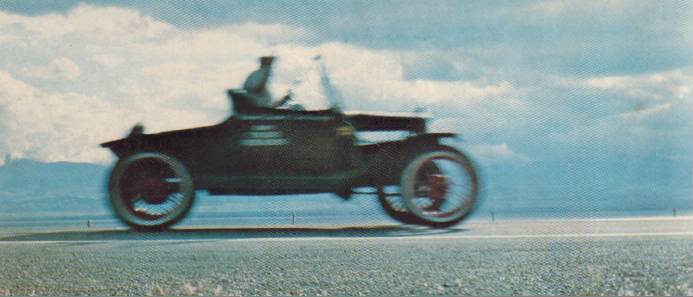

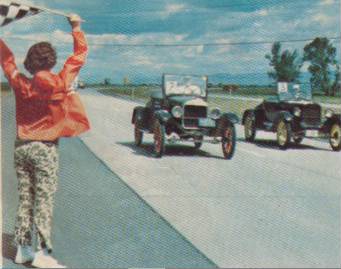

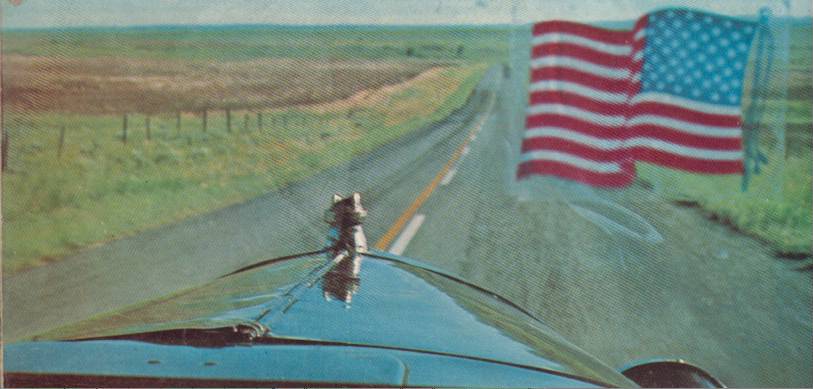

R&T Happenings Dept:
THE
GREAT MONTANA T RACE
in which America's last surviving cross-country dash
is conquered yet again hy Henry's own Fords
STORY & PHOTOS BY JONATHAN THOMPSON
THE LAST MODEL T was built 43 years ago, so I can't assume that the reader knows all about them. Some of you grew up with Model Ts, some have heard your fathers and grandfathers talk about them, some have seen them in parades, some have never seen one. I have to admit that when I went to Montana for the 10th Annual Cross-Country T Race, I had only a vague idea what a T was. Oh, I knew it had four cylinders and spindly wheels and a 2-speed planetary transmission and spark and throttle controls on the steering wheel and was supposed to be black and that it had put America on wheels. But that was about all.
Well, the Model T was a lot of things. After all, Henry Ford built 15,000,000 of them over a 19-year span. The Model T was a touring car, a sedan, a runabout, a coupe, a coupelet, a roadster, a sports car, a racing car. There was enough deluxe, custom and speed equipment made for the T to spill out of the fattest J.C. Whitney catalog. Everybody made something special for the T: non-slip fan belts, foot accelerators, speedometers, muffler cut-outs, shock absorbers, stream-line radiator shells, speedster bodies, radius rod anti-rattling ball sockets. And for racing, from Frontenac, Rajo and others: special carburetors, valve springs, pistons, crankshafts, sliding-gear transmissions, even double-overhead camshafts. The Model T, with its inconsistent starting habits (especially before electric starters), was "the car that made walking a pleasure." The Model T was red, green, blue, pearl gray, French gray - and black. The Model T was a 3-liter putting out 20 bhp at 1800 rpm. The Model T was a brass radiator and wooden wheels. The Model T was $260. It was also $415, $760, $1200. At the end, with fuller fenders, a lower cowl and wire wheels, the Model T looked a lot like its successor, the nearly as famous Model A.
The Montana Cross-Country T Association, Inc. has been racing-not touring-its Ts all over the state for ten years. This year's event was a 3-day, 551-mile run beginning at Helena, the state capital, and ending at Livingston just before the July 4th weekend. The first day's run, with legs to Bozeman, Big Timber and Laurel, was a little under 220 miles, the second, at about 260 miles, had four legs to Roundup, Lewis-town, Harlowton and White Sulphur Springs. The last day was one short leg, leaving time for a tear-down inspection of the three leading cars, a picnic in the park and the awarding of trophies.
Montana is a big state with only about 800,000 people, the roads are good with few cars on them. By day there is no speed limit as such ("reasonable and prudent") so cruising at 80-90 mph is common. Through towns you must be content with 25 mph or even 15 if you're behind someone - but still it's a GT driver's paradise. The western part is mountainous and foresty, with good winding roads; the eastern part is rolling plain with distant horizons giving the state its "Big Sky" nickname. There's still a lot of clean air left.
If you can average 80 mph in a late-model Chevrolet, what thrills does the Model T, with its 42-mph maximum, have to offer? Lots. First of all, though the race is for stock Ts, such things as lighter aluminum pistons, milled heads and careful assembly on the better Ts have given them maximum speeds in the mid-60s. And slipstreaming down a narrow highway in a group of five or six Ts takes all the skill and concentration of an epic battle between Stewart, Rindt, Beltoise, Hulme and Siffert at Monza (well, almost). And that many Ts running hard together sounds like a couple of B-25s from Catch-22. Dog-earing-putting both the spark and gas levers all the way down for maximum speed - isn't recommended for long distances if you want to finish, so there's a nice balance between charging along and getting there. This year's group had 21 finishers out of 31 starters; getting there was the major ambition of most runners with a lot of pride attending a trouble-free run. The disappointment of breakdowns was lessened somewhat by the fact that backup cars - station wagons and pickups filled with dutiful wives and enthusiastic kids - were running within sight of the competitors, able to collect any unfortunates with trailers or tow-bars.
What a good group of people! A more open, fun-loving, generous and uncomplaining bunch you won't find. Most of the entries were from small Montana communities, with a few from Washington, Illinois, Wyoming and California; driver's ages ran from over 70 down to the mid-20s. T drivers are cattle ranchers or wheat farmers or work for the telephone company or run a garage. At home they're as likely to ride a Yamaha as a horse, to drive a Mercedes as an Oldsmobile. During the race week they're out past midnight having a good time and up with the sun getting ready for the next run. Doing this with them was a big thing for me. After only five days (I'd come early for a reconnaissance, never having been in Montana before) I felt I'd known quite a few of them for years. (Bud Peters, the club's president, did a lot to show me a good time, all the while taking care of organizational and technical details and driving in the race himself.) All the small towns on the route were turned out, too. Having a free barbecue sandwich and cold lemonade handed to you at the end of a run is pretty nice.
There were two classes running concurrently in the race: Ts with aluminum pistons and Ts with cast-iron pistons. The former were a lot faster, comprised three-quarters of the entry and the first 16 finishers. All of the entries were roadsters, the majority of them 1926-27 models. The pattern of the race developed early and didn't change significantly on the next two days: Frank Iverson's immaculate and sweet-running T moved right off and was never caught, though Dick Bergan's not-quite-so-tidy but superstrong T narrowed the gap steadily. After the first day's run to Laurel, Iverson had a lead of over 11 minutes on Bergan; finishing the second and longest day at White Sulphur Springs, Bergan had reduced the gap to under nine minutes. If Iverson continued to run even moderately well the final leg to Livingston was too short for Bergan to make up the difference but he did reduce it to seven and a half minutes. Nobody else looked like racing with either of them but there was a tremendous 3-day battle for third. At Laurel, Frank Hansard, John Pope, Mike Meuli, David Ratzburg, Marvin Fretheim and Fred Upshaw were all within two minutes of one another, in that order. The second day was five and a half hours of slipstreaming, and I got right in the midst of it, riding first with Fretheim and then with Meuli.
Here's how it works: At the beginning of the day's first leg, the cars start at one-minute intervals, in reverse order of their previous day's finish. So about halfway through the leg, six or eight cars are suddenly sharing the same piece of road. And the moderate differences in power that brought them together aren't enough for any of them to break free - as long as the others are alert. So there's a lot of sideways driving, darting in and out of each other's slipstreams, mostly so close you can't see the license plate of the car ahead, throttle and spark levers moving up and down with subtle authority. When a slightly faster T gets out there beside you it takes him maybe a mile to gain a car length; if a sedan is bearing down on him from the other direction (open highway, remember!) he tucks in behind again - after all that work - unless he's significantly ahead - a few feet - in which case courtesy says you drop back to let him in. This code seems to work pretty well, with no accidents so far, though I got a couple of my rental Impala's wheels off the road once when I joined one of these 55-mph gaggles to take some pictures. When the route takes in a stretch of divided Interstate highway three or four Ts can run abreast, for miles; this impressive sight made at least one Montana Highway Patrol officer grumpy about the possibility of another T race. But he'd just come off a night shift for a day shift and, was grumpy anyway; if he hasn't turned in a bad report, everything should be smooth for next year.
At White Sulphur Springs the 6-way battle for third was down to a 3-way fight, with Hansard falling 25 minutes off the pace, Fretheim accepting an hour penalty in order to replace bearings and Upshaw finding tissue paper in his gas line, which cost him several roadside get-out-and-get-unders and many lost minutes. No one believed another competitor would have stuffed his tank but it's just as hard to believe the other possibility, that one of the countless small boys who crawled all over Ts at several stops would have known where the gas tank was even if you assume a little mischievousness. All very disturbing, and discouraging to an entrant who came all the way from California. Anyway, going into the last day, Pope, Meuli and Ratzburg were within two and a half minutes. Meuli resolved this with a fast run down to Livingston, almost as good as Bergan's, taking third place from Pope. Average speeds given for the faster cars were in the 50s, but since these were computed on map mileages from town center to town center, the actual distances from flag-off to flag-in points, and thus the actual average speeds, weren't recorded. How about 47.5 mph? That sounds like a pretty good average for a 43-year-old-car that's only supposed to do 42 mph!
So it was time for sandwiches and beer and pop and potato salad and trophies and plaques and lying under shade trees next to the Yellowstone River. You can't wind up anything much better than that.
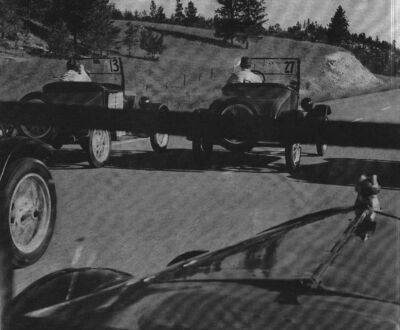
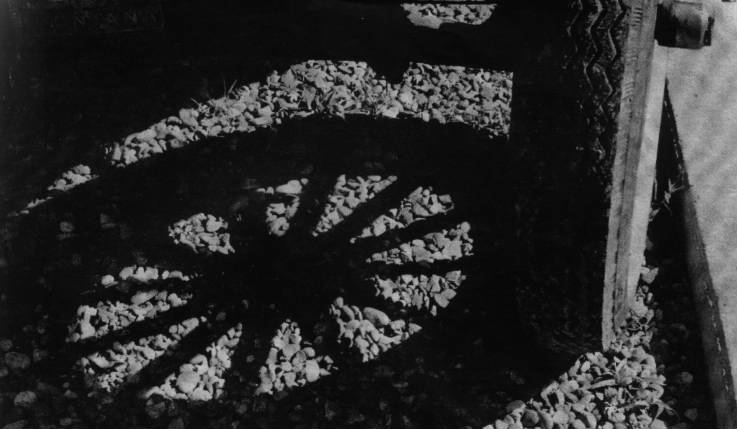

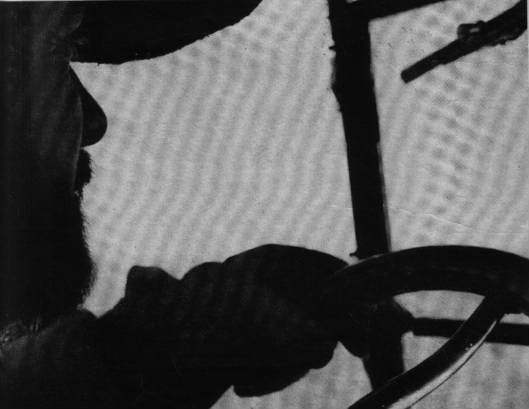
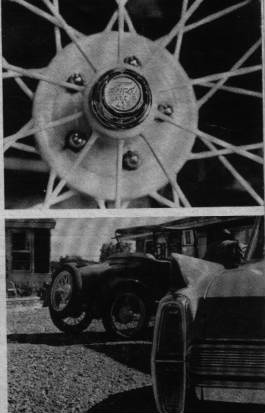
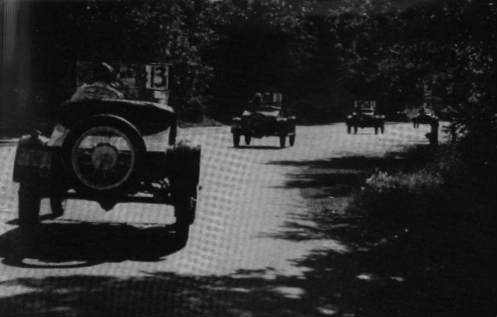

MONTANA CROSS-COUNTRY T RACE
Helena-Bozeman-Big Timber-Laurel-Roundup-Lewistown-Harlowtown-White Sulphur Springs-Livingston
June 30-July 2, 1970
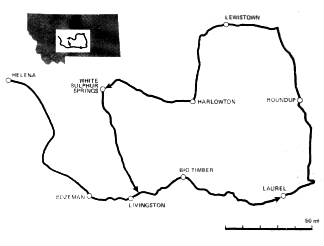
Driver Class Home Town Time
1 Frank Iverson A Ledger 10:45:11
2 Dick Bergan A Spokane, Washington 10:52:41
3 Mike Meuli A Conrad 11:12:35
4 John Pope A Lewistown 11:15:23
5 David Ratzburg A Ledger 11:16:07
6 Al Rieker A Boulder 11:37:38
7 Frank Hansard A Big Sandy Mountain 11:43:16
8 Don Englmann A Chicago, Illinois 11:52:47
9 Fred Upshaw A Fullerton, California 11:55:11
10 Ray Habel A Dutton 11:59:30
11 Bob Zornes/Bob Ching A Spokane, Washington 12:18:30
12 Ray Behnke A Kewanee, Illinois 12:24:39
13 Marvin Fretheim A Ledger 12:26:27
14 Eldon Snedigar A White Sulphur Springs 12:28:20
15 Dave Meuli A Ledger 12:40:14
16 Lee Willis A Gilette, Wyoming 12:51:13
17 Ed Hencz C Livingston 13:01:04
18 Joe Walsh A White Sulphur Springs 13:26:30
19 Perry Matthews C Helena 13:40:00
20 Bill Shipley C Livingston 13:43:24
21 Chuck Worthington C Livingston 17:36:34
Out on 3rd day:
Grant Lundin A Spokane, Washington
Out on 2nd day:
C. Halseth C Dutton
Jack Pachek C Great Falls
Phil Polillo A Livingston
Out on 1st day:
Rich Armstrong C Helena
Gene Hansard A Rudyard
Dean Hershey C Boulder
John Frick A Dutton
Bud Peters A Ledger
Bill Ward C Livingston
Classes: A-Aluminum piston C-Cast-iron piston
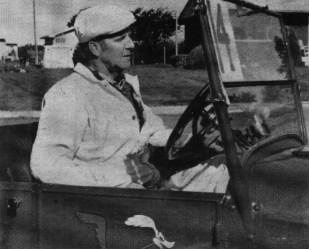
Frank Iverson